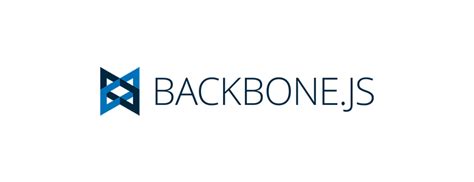What Is Backbone.JS?
 Olabode Olusegun
Olabode Olusegun
Backbone.JS is a lightweight JavaScript framework that allows you develop and structure client side applications that run in a web browser. Backbone.JS which is based on the MVP (model-view-presenter) paradigm, and it has a RESTfull JSON interface. You can use Backbone.js as an alternative to React.js in creating single-page web applications so that you can keep a number of pages synchronized. It offers MVC framework which abstracts data into models, DOM into views and bind these two using events.
It was developed by Jeremy Ashkenas who developed CoffeeScript and Underscore.js. It was initially released on october 13th, 2010.
When to use Backbone?
For instance, lets say you are creating an application with numerous lines of code using JQuery or JavaScript and you want to,
i. add or replace DOM elements to the application or,
ii. make some requests or show animation in the application or add more lines of code, then your application becomes complicated or might become complicated.
- If you want a very good design with less code, you use the backboneJS library that provides good functionality. It is well organized and it is in a structured manner for developing your application.
- BackboneJS communicates via events; this makes sure that you do not mess up the application. your code will be cleaner, nicer and easy to maintain.
BackboneJS Features
It allows developers to develop one page applications and front-end much easier and better using JavaScript functions.
When a model changes, it automatically updates the html of your application.
It contains over 100 available extensions. It is also free and open source library.
It allows developers to create client side web applications or mobile applications in well structured and organized format.
Backbone.JS acts as the backbone for your project. It makes your code simple, systematic and organized.
It also has a soft dependency with jQuery and hard dependency with Underscore.js.
Backbone is comparatively much smaller and performant as compared to React.
Pros of BackboneJS
BackboneJS uses a template engine for building your application’s flexible UI.
It also enables complex user interaction very easily.
You can call all the underscore.js methods using your backbone.js objects.
Backbone.js is extendable by using the varied plugins available.
Your backbone.js classes can listen and trigger because they extend the event class.
Cons of BackboneJS
BackboneJS does not support data binding.
It takes a lot of time to learn and understand the new syntax of coding backbone.js.
When using BackboneJS, you can get into a lot of mess while coding.
You can learn more about Backbone.JS here
Subscribe to my newsletter
Read articles from Olabode Olusegun directly inside your inbox. Subscribe to the newsletter, and don't miss out.
Written by

Olabode Olusegun
Olabode Olusegun
Passionate about crafting elegant code and building innovative solutions that make a positive impact. 🚀 Join me on a journey through the realms of technology as I share my experiences, insights, and latest discoveries. 💡 Let's dive into the world of software engineering, development trends, and emerging technologies together. Follow along for a dose of tech inspiration and knowledge.